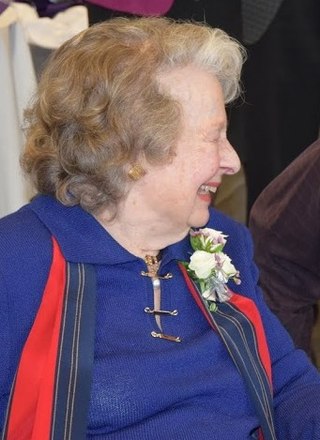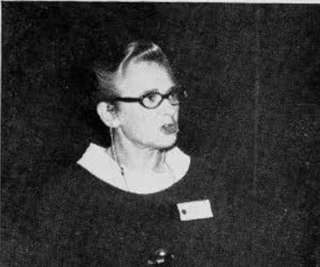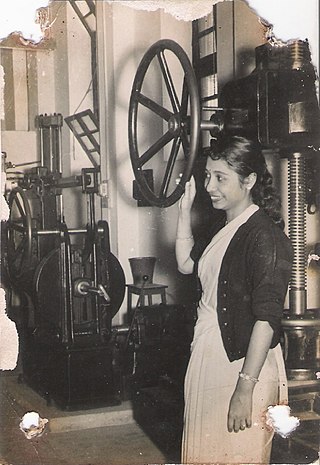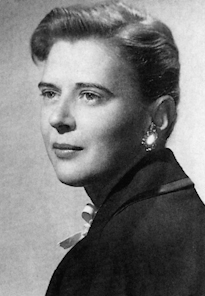
Dr. Shirley Ann Jackson, is an American physicist, and was the 18th president of Rensselaer Polytechnic Institute. She is the first African American woman to have earned a doctorate at the Massachusetts Institute of Technology (MIT) in Theoretical Elementary Particle Physics, and the first African American woman to have earned a doctorate at MIT in any field. She is also the second African American woman in the United States to earn a doctorate in physics.

Rensselaer Polytechnic Institute is a private research university in Troy, New York, with an additional campus in Hartford, Connecticut. A third campus in Groton, Connecticut, closed in 2018. RPI was established in 1824 by Stephen Van Rensselaer and Amos Eaton for the "application of science to the common purposes of life" and is the oldest technological university in the English-speaking world and the Western Hemisphere.

The Society of Women Engineers (SWE) is an international not-for-profit educational and service organization. Founded in 1950 and headquartered in the United States, the Society of Women Engineers is a major advocate for women in engineering and technology. SWE has over 40,000 members in nearly 100 professional sections, 300 collegiate sections, and 60 global affiliate groups throughout the world.
Elsie Eaves was a pioneering American female engineer, the first female associate member of the American Society of Civil Engineers (ASCE), and a founding member of the American Association of Cost Engineers.

Edith Clarke was an American electrical engineer. She was the first woman to be professionally employed as an electrical engineer in the United States, and the first female professor of electrical engineering in the country. She was the first woman to deliver a paper at the American Institute of Electrical Engineers; the first female engineer whose professional standing was recognized by Tau Beta Pi, the oldest engineering honor society and the second oldest collegiate honor society in the United States; and the first woman named as a Fellow of the American Institute of Electrical Engineers. She specialized in electrical power system analysis and wrote Circuit Analysis of A-C Power Systems.

The history of women in engineering predates the development of the profession of engineering. Before engineering was recognized as a formal profession, women with engineering skills often sought recognition as inventors. During the Islamic Golden Period from the 8th century until the 15th century there were many Muslim women who were inventors and engineers, such as the 10th-century astrolabe maker Al-ʻIjliyyah.
Eleanor K. Baum is an American electrical engineer and educator. In 1984, she became the first female dean of an engineering school in the United States, at Pratt Institute in Brooklyn, New York.
Nancy Burr Deloye Fitzroy was an American engineer specializing in heat transfer and fluid dynamics. She was one of the first female helicopter pilots.
Margaret R. Fox (1916-2006) was an American electronics engineer and computer scientist. She was the Chief of the Office of Computer Information, part of the Institute for Computer Science and Technology of the National Bureau of Standards from 1966 to 1975 and was the first secretary of the American Federation of Information Processing Societies.
Betty Lou Bailey was a General Electric Company mechanical engineer from the United States. She held a patent for an aircraft variable exhaust nozzle. The invention operated so that one would vary both the throat and the exit diameters for the hot gas flows. In honor of her legacy, the Society of Women Engineers named a scholarship after her. To date, that scholarship is still being distributed to eligible female graduate students who pursue a career in engineering.

Irene Carswell Peden is an American engineer who has contributed much to the field of electrical engineering. She is known for being the first American woman scientist to live and work in the interior of the Antarctic, where she developed new methods to analyze the deep glacial ice by studying the effect it has on radio waves.

Katharine Stinson (1917-2001) was an American aeronautical engineer and the Federal Aviation Administration's first female engineer.
Dorothy M. Hoffman was an American chemical engineer. In 1974 she became the first woman to be elected president of American Vacuum Society and the first woman to serve as president of any scientific society in the USA.

Lois Graham was a professor of thermodynamics and cryogenics. She was the first woman to earn a mechanical engineering PhD in the United States.

Ayyalasomayajula Lalitha was India's first female engineer.

Ruth Shafer, was the chair of the first international conference of women engineers and scientists.
Marja "Maria" Ludwika Watkins was a defence electronics engineer, lecturer and President of the Women's Engineering Society.
ICWES is an international conference for engineers and scientists. Established in 1964, it takes place every 3–4 years in countries around the world.

Ila Ghose was a mechanical engineer and West Bengal's first woman engineer. She was the first female alumna of the Bengali Engineering College.











